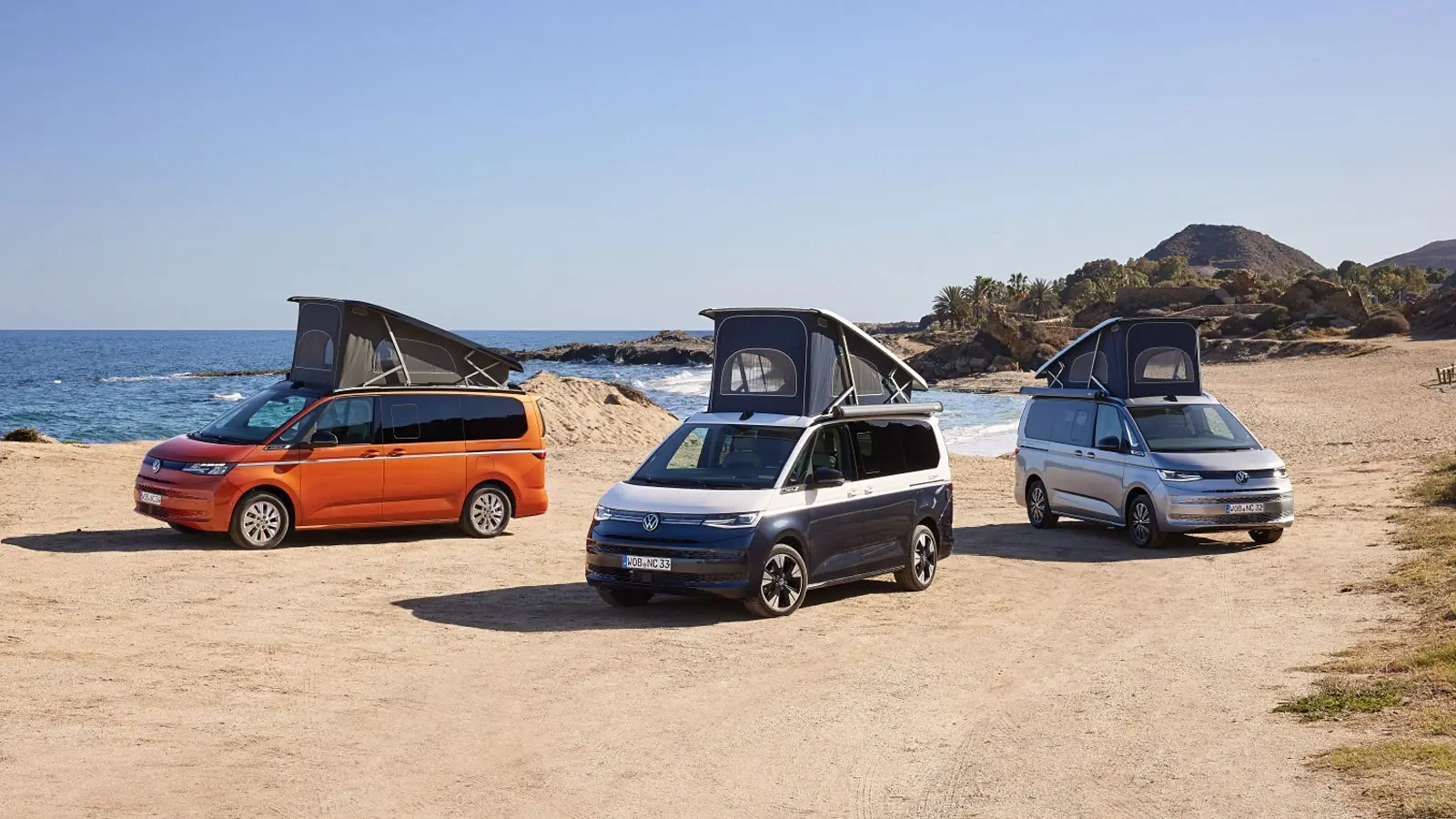News
Explore the New VW California Camper Van: Seventh Generation Unveiled

The latest VW California camper van offers enhanced size, dual sliding doors, and modern trims, catering to adventure and comfort for on-the-go lifestyles.
Volkswagen has launched the seventh generation of the California camper van, a model that has captivated enthusiasts since its inception in 2004, with over 200,000 units produced. Although not available in the U.S., the new California aligns well with the style and spirit of the electric ID.Buzz, reminiscent of the nostalgic VW Eurovan sold stateside from 1993-2002. Volkswagen introduced a concept last year that closely inspired many features in the current production model.
Built on the versatile Multivan MPV platform, which itself is based on VW’s flexible MQB architecture (also underpinning vehicles like the Passat and GTI), this generation of the California camper van embraces a more lifestyle-oriented brand vision. Volkswagen aims to foster a community around this model, offering owner experiences akin to what Jeep provides for Wrangler owners.
The latest model boasts significant enhancements in size, with a 10.6-inch increase in length and a 1.5-inch increase in width compared to its predecessor. These dimensions allow for dual sliding doors, enhancing accessibility compared to the traditional single sliding door setup. The iconic pop-top remains, now with options for up to four sleeping areas, catering to different customer needs.
The California is offered in five trims: Beach, Beach Tour, Beach Camper, Coast, and Ocean, each with unique features. The Beach, for instance, is the base model featuring a manual pop-top and seating for six, but sleeping space for only two. The Beach Tour offers additional versatility with five seats that fold flat for more sleeping space and includes a small display for controlling various cabin functions like lighting and heating. The Beach Camper includes a kitchenette and ample storage, aiming at more extended stays, while the Coast and Ocean trims enhance these offerings with even more amenities.
Engine options for this camper are diverse, including a 144 horsepower turbo diesel and a more robust 198 horsepower gasoline engine. Those seeking all-wheel drive can opt for the plug-in hybrid electric vehicle (PHEV) version, which merges a 1.5-liter turbocharged gas engine with an electric motor and battery, although specific power outputs weren’t disclosed. This version also supports towing capabilities up to 4,000 pounds. While pricing details for the seventh generation are yet to be released, the previous model’s starting price sets expectations for a premium investment.
This evolution of the VW California camper van underscores Volkswagen’s commitment to enhancing lifestyle and utility for modern adventurers, offering a blend of classic design and contemporary technology.
Michael Johnson
2024, May 08 08:43